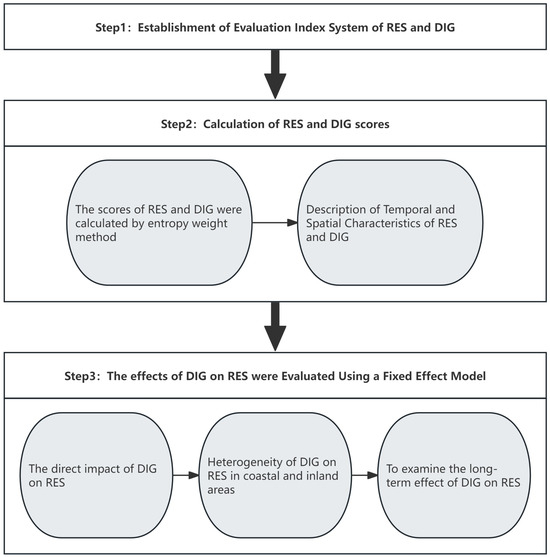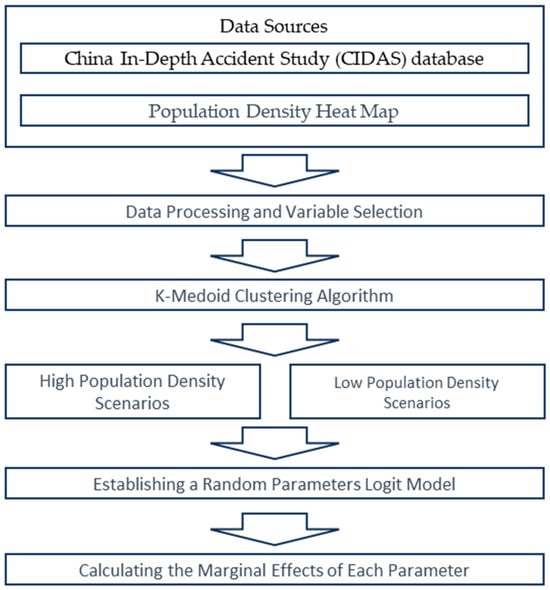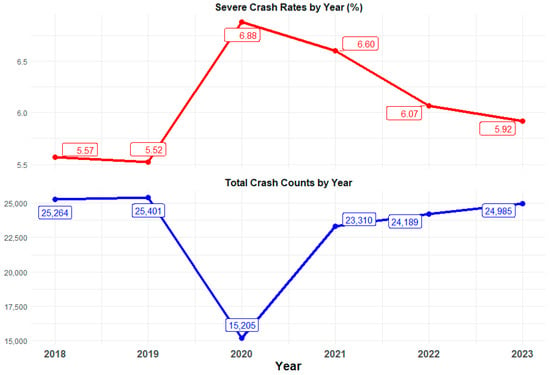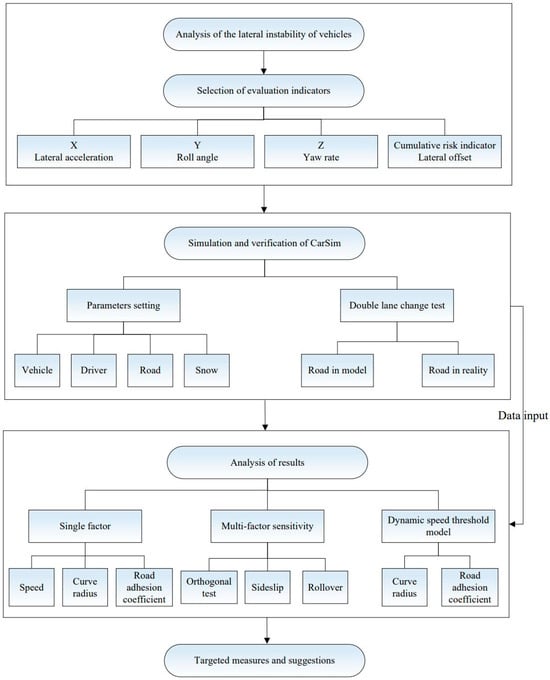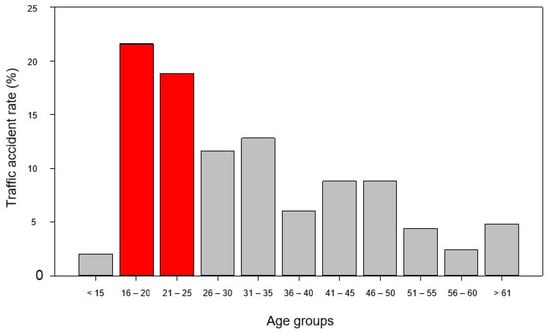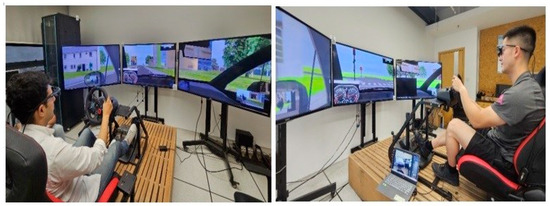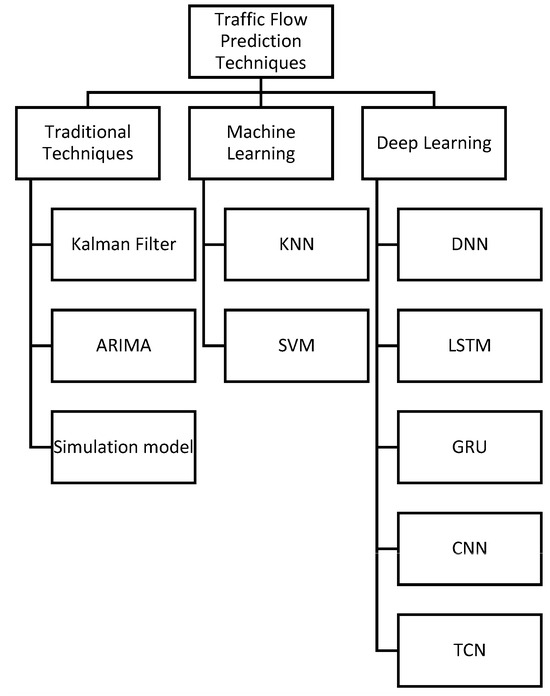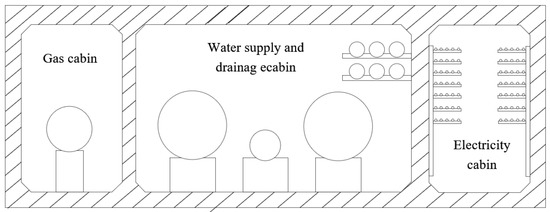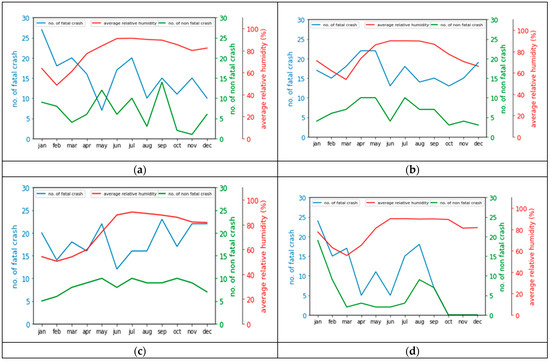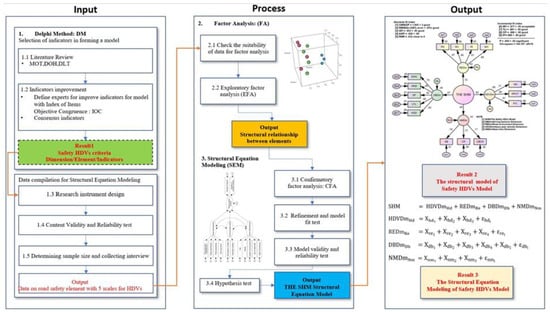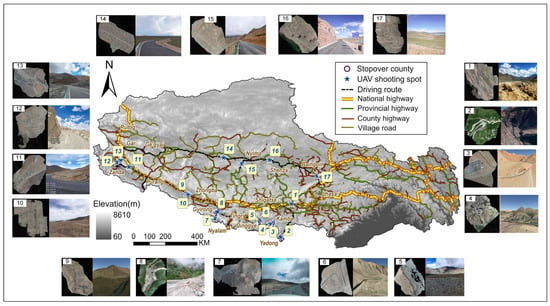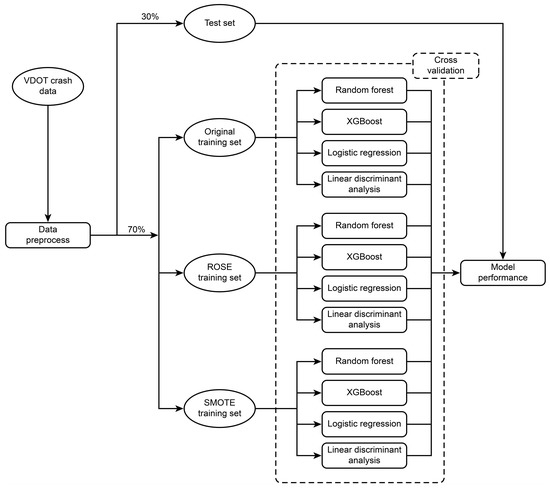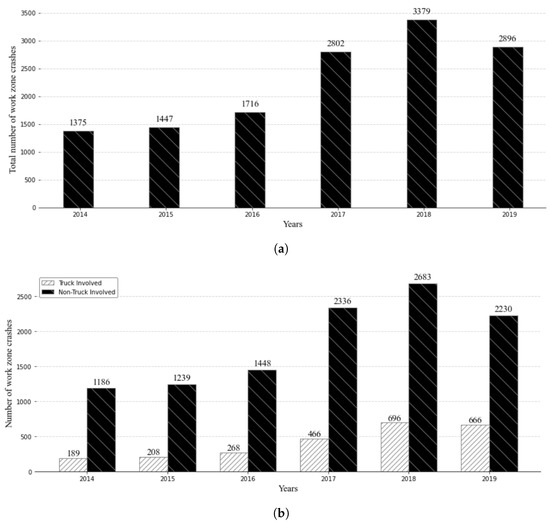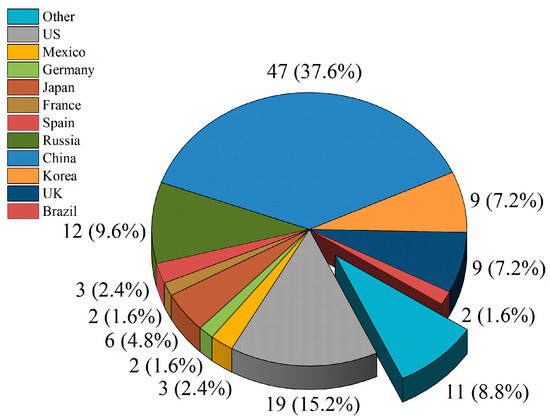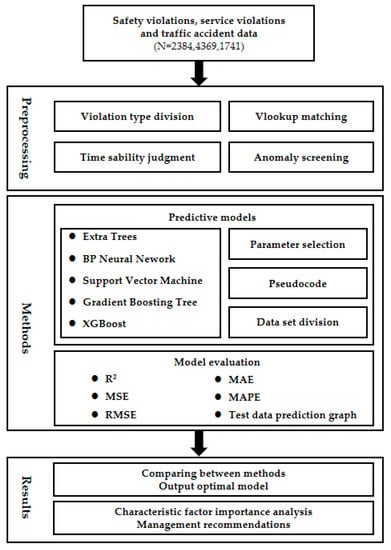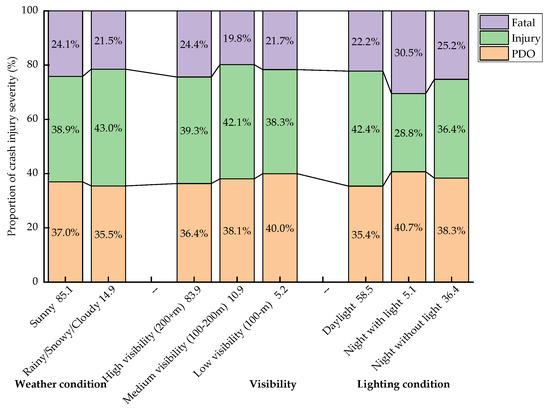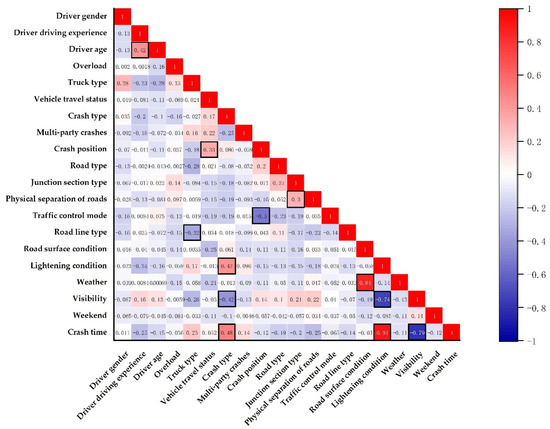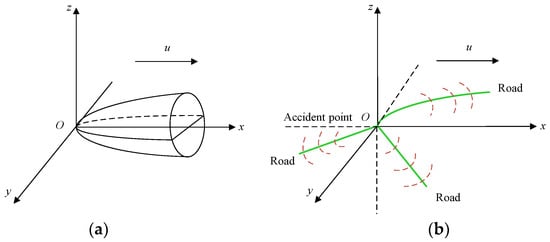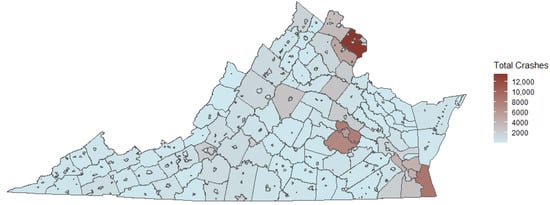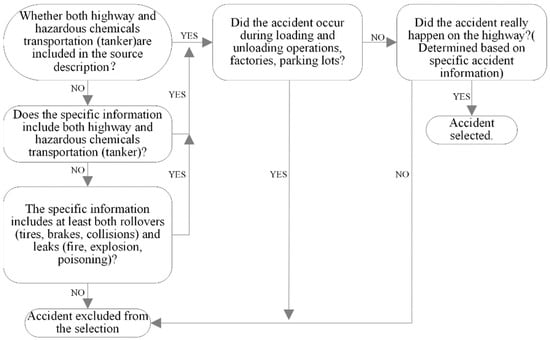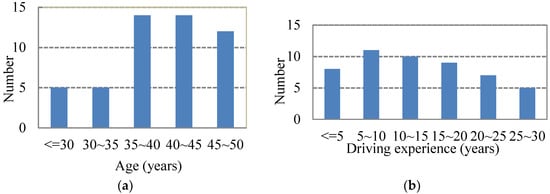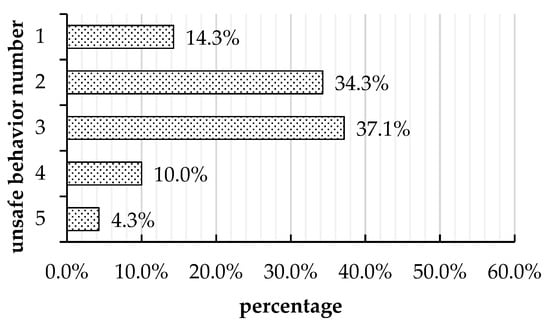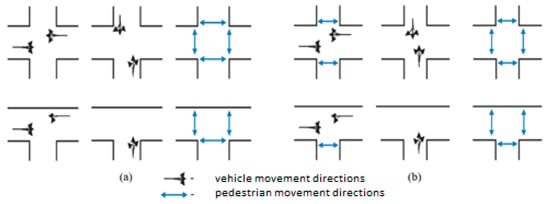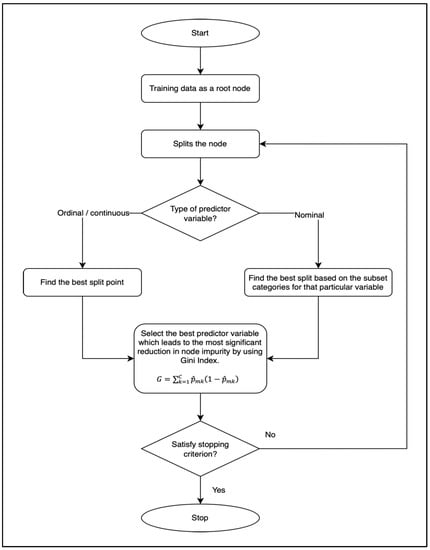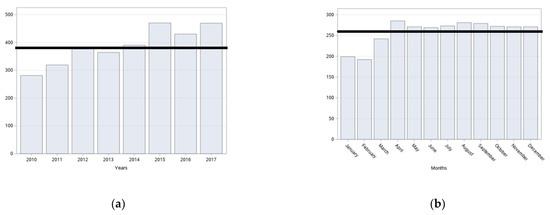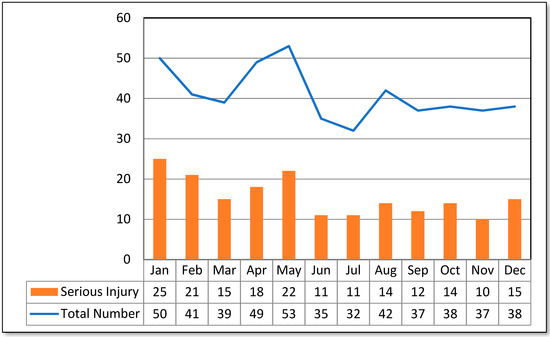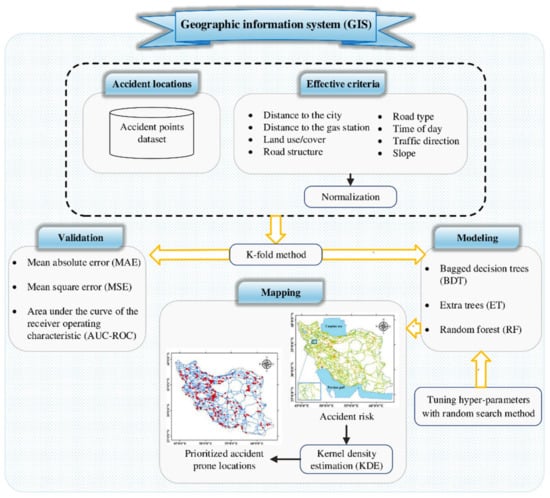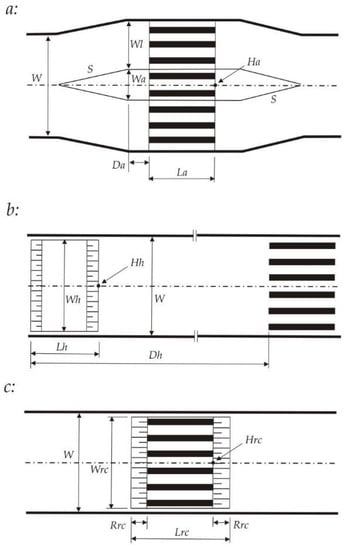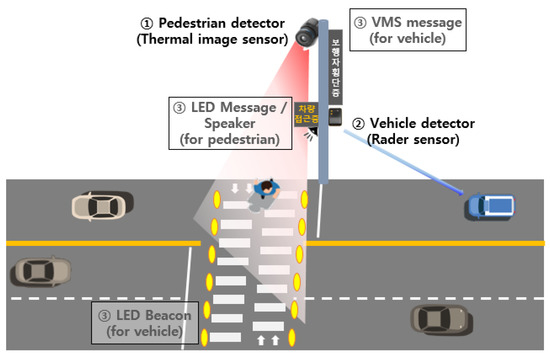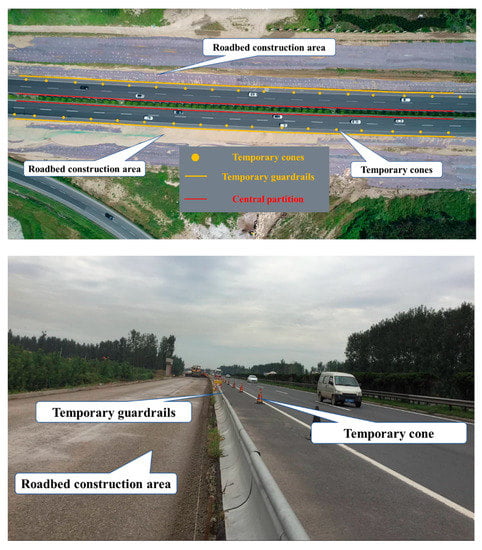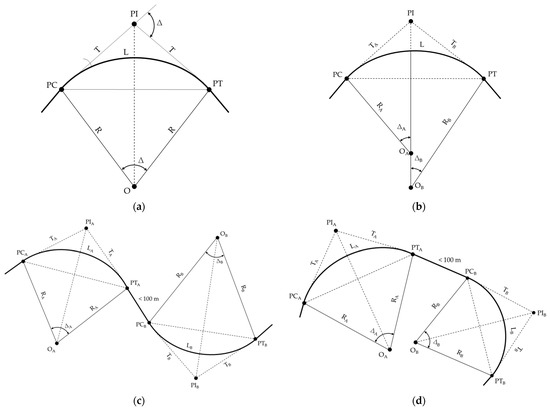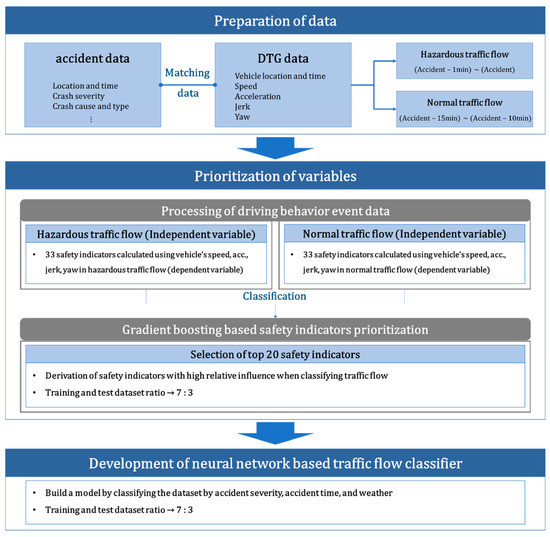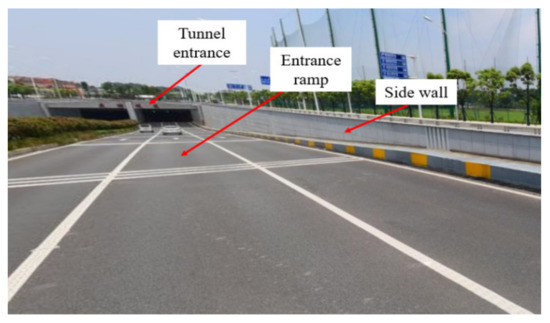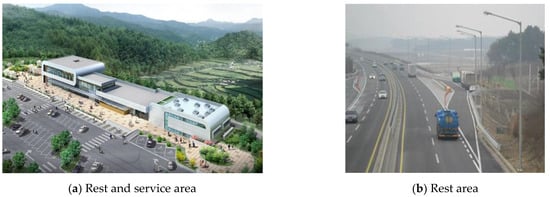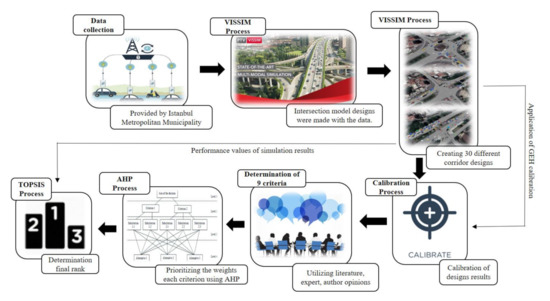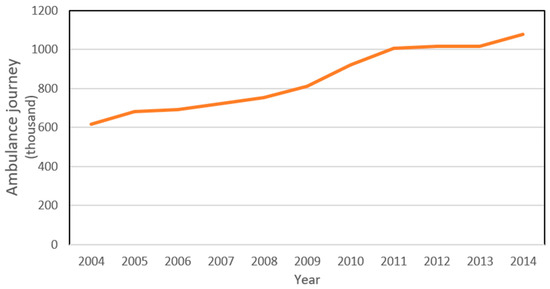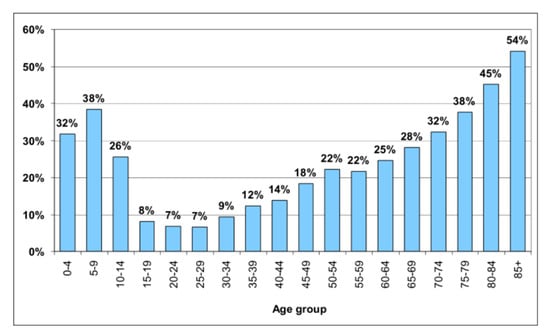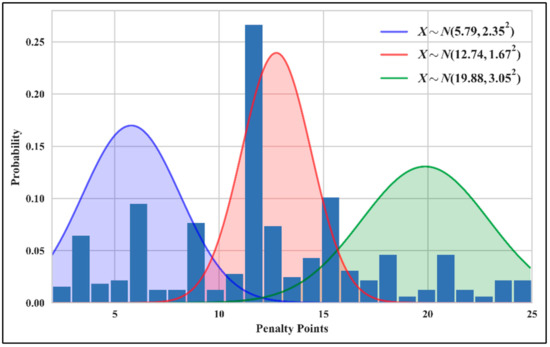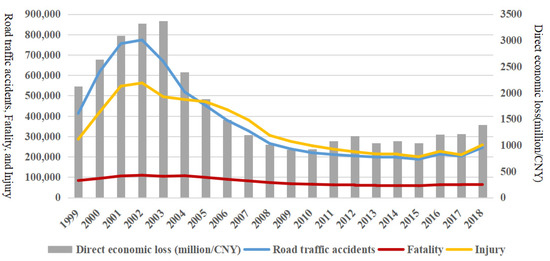Accident Prevention and Risk Management for Safe and Sustainable Transportation
Share This Topical Collection
Editors
 Prof. Dr. Juneyoung Park
Prof. Dr. Juneyoung Park
 Prof. Dr. Juneyoung Park
Prof. Dr. Juneyoung Park
E-Mail
Website1
Website2
Collection Editor
Department of Transportation and Logistics Engineering, Hanyang University, Ansan 15588, Republic of Korea
Interests: traffic safety; proactive crash risk management; big data analytics; traffic control in connected and autonomous vehicle environment
Special Issues, Collections and Topics in MDPI journals
 Dr. Yina Wu
Dr. Yina Wu
 Dr. Yina Wu
Dr. Yina Wu
E-Mail
Website
Collection Editor
Department of Civil, Environmental, and Construction Engineering, University of Central Florida, Orlando, FL 32816, USA
Interests: traffic safety; real-time traffic control and management; connected and autonomous vehicle (CAV); vulnerable road user safety
Special Issues, Collections and Topics in MDPI journals
 Dr. Hochul Park
Dr. Hochul Park
 Dr. Hochul Park
Dr. Hochul Park
E-Mail
Website
Collection Editor
Department of Transportation Engineering, Myongji University, Yongin 17058, Korea
Interests: smart mobility; safe and sustainable transportation; traffic operation and management
Topical Collection Information
Dear Colleagues,
A safe and sustainable transportation environment has been considered as an important issue. The main purpose of this Collection is to investigate novel research idea to determine advanced alternatives for safe and sustainable transportation. This Collection covers a wide range of studies, including theoretical research, empirical practices, and review articles. The potential topics include but are not limited to the followings: (1) analytical methods in accident prevention; (2) safety evaluation of transportation countermeasures; (3) approaches including artificial and computational intelligence; (4) proactive crash risk management; (5) analysis of risky driving behaviour; (6) traffic operation in connected and autonomous environment; (7) models to determine factors contributing to accident; (8) big-data mining applications; (9) strategies to enhance safety of multimodal transportation networks; and (10) cooperative intelligent transportation system and advanced communication technology. Other topics related to accident prevention and risk management are also welcomed. This Collection on “Accident Prevention and Risk Management for Safe and Sustainable Transportation” is expected to provide useful insights and knowledge to make safe and sustainable transportation.
Dr. Juneyoung Park
Dr. Yina Wu
Dr. Hochul Park
Collection Editors
Manuscript Submission Information
Manuscripts should be submitted online at www.mdpi.com by registering and logging in to this website. Once you are registered, click here to go to the submission form. Manuscripts can be submitted until the deadline. All submissions that pass pre-check are peer-reviewed. Accepted papers will be published continuously in the journal (as soon as accepted) and will be listed together on the collection website. Research articles, review articles as well as short communications are invited. For planned papers, a title and short abstract (about 100 words) can be sent to the Editorial Office for announcement on this website.
Submitted manuscripts should not have been published previously, nor be under consideration for publication elsewhere (except conference proceedings papers). All manuscripts are thoroughly refereed through a single-blind peer-review process. A guide for authors and other relevant information for submission of manuscripts is available on the Instructions for Authors page. Sustainability is an international peer-reviewed open access semimonthly journal published by MDPI.
Please visit the Instructions for Authors page before submitting a manuscript.
The Article Processing Charge (APC) for publication in this open access journal is 2400 CHF (Swiss Francs).
Submitted papers should be well formatted and use good English. Authors may use MDPI's
English editing service prior to publication or during author revisions.
Keywords
- Accident Prevention
- Risk Management
- Analytical Methods and Approaches
- Traffic Safety
- Sustainability
Published Papers (44 papers)
Open AccessArticle
The Impact of Digital Development on Port Security Resilience—An Empirical Study from Chinese Provinces
by
Xiaohong Ren, Jia Shen, Zhitao Feng, Xihuai Wang and Kaige An
Viewed by 633
Abstract
As the world transitions into the post-pandemic era, ports in various countries are experiencing increased activity, leading to significant challenges in ensuring traffic safety within port jurisdictions. It is essential to explore methods to improve port security resilience to maintain regular economic and
[...] Read more.
As the world transitions into the post-pandemic era, ports in various countries are experiencing increased activity, leading to significant challenges in ensuring traffic safety within port jurisdictions. It is essential to explore methods to improve port security resilience to maintain regular economic and trade exchanges. This article examines the influence of digital development on port security resilience. Firstly, the provincial digital development level score is objectively evaluated from the perspective of digital infrastructure, digital application, and digital industry development. Secondly, the port safety resilience score is assessed considering water traffic safety, rescue and recovery capabilities, and operational efficiency. Lastly, the focus is on 16 provinces in China’s coastal and Yangtze River Economic Belt, establishing provincial panel data from 2010 to 2019, and empirically analyzing the direct impact of digital development on the resilience of port security. The results indicate that digital development enhances the resilience of port security, with significant heterogeneity and long-term effects observed.
Full article
►▼
Show Figures
Open AccessArticle
Assessing the Impact of Different Population Density Scenarios on Two-Wheeler Accident Characteristics at Intersections
by
Ziwei Wang, Lin Hu, Fang Wang, Miao Lin and Ning Wu
Viewed by 522
Abstract
Examining 1192 intersection car and two-wheeled vehicle collision accidents from the China In-Depth Accident Study (CIDAS) database, this study employs population density heat maps for precise assessment of surrounding population densities at accident sites. The K-Medoid clustering algorithm and silhouette coefficient were used
[...] Read more.
Examining 1192 intersection car and two-wheeled vehicle collision accidents from the China In-Depth Accident Study (CIDAS) database, this study employs population density heat maps for precise assessment of surrounding population densities at accident sites. The K-Medoid clustering algorithm and silhouette coefficient were used to classify accidents into two distinct groups based on population density. Subsequent application of the random parameter logit model revealed key contributing factors to these accidents in varying population densities. The results show notable differences in factors such as collision direction of two-wheeled vehicles, types of accident conflict, road conditions, and traffic flow, depending on the population density. Based on these conclusions, the research can inform differentiated risk prediction for two-wheeled vehicle accidents at intersections and provide insights for intersection design in various population density scenarios.
Full article
►▼
Show Figures
Open AccessArticle
An Econometric Analysis to Explore the Temporal Variability of the Factors Affecting Crash Severity Due to COVID-19
by
Mubarak Alrumaidhi and Hesham A. Rakha
Viewed by 723
Abstract
This study utilizes multilevel ordinal logistic regression (M-OLR), an approach that accounts for spatial heterogeneity, to assess the dynamics of crash severity in Virginia, USA, over the years 2018 to 2023. This period was notably influenced by the COVID-19 pandemic and its associated
[...] Read more.
This study utilizes multilevel ordinal logistic regression (M-OLR), an approach that accounts for spatial heterogeneity, to assess the dynamics of crash severity in Virginia, USA, over the years 2018 to 2023. This period was notably influenced by the COVID-19 pandemic and its associated stay-at-home orders, which significantly altered traffic behaviors and crash severity patterns. This study aims to evaluate the pandemic’s impact on crash severity and examine the consequent changes in driver behaviors. Despite a reduction in total crashes, a worrying increase in the proportion of severe injuries is observed, suggesting that less congested roads during the pandemic led to riskier driving behaviors, notably increased speed violations. This research also highlights heightened risks for vulnerable road users such as pedestrians, cyclists, and motorcyclists, with changes in transportation habits during the pandemic leading to more severe crashes involving these groups. Additionally, this study emphasizes the consistent influence of environmental and roadway features, like weather conditions and traffic signals, in determining crash outcomes. These findings offer vital insights for road safety policymakers and urban planners, indicating the necessity of adaptive road safety strategies in response to changing societal norms and behaviors. The research underscores the critical role of individual behaviors and mental states in traffic safety management and advocates for holistic approaches to ensure road safety in a rapidly evolving post-pandemic landscape.
Full article
►▼
Show Figures
Open AccessArticle
Influence of Snowy and Icy Weather on Vehicle Sideslip and Rollover: A Simulation Approach
by
Qingzhou Wang, Yaxuan Zhao, Lujia Li, Liying Kong and Wenjing Si
Viewed by 662
Abstract
Many northern hemisphere countries have experienced exceptionally heavy snow, blizzards, and cold snaps in recent years, causing considerable public concern about the high crash rate and safety issues in road traffic. This study used the CarSim dynamics simulation to recreate several vehicle driving
[...] Read more.
Many northern hemisphere countries have experienced exceptionally heavy snow, blizzards, and cold snaps in recent years, causing considerable public concern about the high crash rate and safety issues in road traffic. This study used the CarSim dynamics simulation to recreate several vehicle driving scenarios in snow and ice conditions. To explore the influence of speed, curve radius, and road adhesion coefficient on vehicle sideslip and rollover, four lateral stability evaluation indicators, namely lateral offset, lateral acceleration, yaw rate, and roll angle, are chosen. Unfavorable combinations of these factors result in vehicle deviation from their intended trajectory and dramatically increase the likelihood of sideslip and rollover incidents. In particular, road adhesion coefficients ranging from 0.10 to 0.20 lead first to sideslip, while coefficients of 0.21 to 0.35 lead straight to rollover. Additionally, in the initial segment of the curve, cars are more susceptible to lateral instability. Curve radius has the greatest influence on sideslip when the three influencing factors are combined, while speed is the key component affecting rollover incidents. Smaller curve radii and higher speeds are major factors in such incidents. The results are helpful for proper road alignment parameter selection and dynamic speed-limit measures. This can provide a theoretical basis for traffic management departments to take targeted measures, which is of great significance to improving road traffic safety in snowy and icy weather.
Full article
►▼
Show Figures
Open AccessArticle
Personality Traits Affecting Risky Riding Behavior: An Application of an Extended Theory of Planned Behavior
by
Luu Van Le, Long Xuan Nguyen, Minh Cong Chu and Nathan Huynh
Cited by 1 | Viewed by 701
Abstract
The primary objective of this study is to investigate the influence of personality traits such as anxiety, sensation seeking, altruism, anger, and normlessness on young powered two-wheeler riders’ risky riding behavior. The theory of planned behavior (TPB) is extended to include personality traits
[...] Read more.
The primary objective of this study is to investigate the influence of personality traits such as anxiety, sensation seeking, altruism, anger, and normlessness on young powered two-wheeler riders’ risky riding behavior. The theory of planned behavior (TPB) is extended to include personality traits forming an extended TPB (ETPB). The ETPB model is used to examine how personality traits directly influence risky riding behavior and indirectly influence risky riding behavior through latent mediating factors. The secondary objective is to examine the differences in interactions between personality traits, mediating factors, and risky riding behaviors of those who have been and have not been involved in traffic accidents. The study sample included 535 high school students in Phu Yen, Vietnam. The results showed that personality traits, directly and indirectly, influence risky riding behaviors through the mediating construct. Young riders with sensation-seeking, anger, and normlessness have a higher frequency of risky riding behavior than those with anxiety and altruistic personality traits. Sensation seeking, anger, and normlessness indirectly influence risky riding behavior through risk perception and subjective norms. In addition, the results also show a clear difference in the relationship between the personality and behavior of people who have been involved in traffic accidents and those who have never been involved in accidents.
Full article
►▼
Show Figures
Open AccessArticle
Driver Adaptability When Traffic Side Is Switched from Left to Right and Vice Versa: A Driving Simulator Study with Chinese and Pakistani Drivers
by
Sheng Dong, Syed Huzaifa Hussain, Feng Chen, Jibiao Zhou, Feifei Xu and Afaq Khattak
Viewed by 785
Abstract
Driving simulators serve as valuable instruments for traffic safety research because they enable the creation of various scenarios that are hard to replicate in the real world. Eye tracker devices have proven to be immensely beneficial in studying eye movements. In this particular
[...] Read more.
Driving simulators serve as valuable instruments for traffic safety research because they enable the creation of various scenarios that are hard to replicate in the real world. Eye tracker devices have proven to be immensely beneficial in studying eye movements. In this particular study, the objective was to examine potential variations in the adaptability of young male Chinese and Pakistani student drivers to left-hand traffic (LHT) and right-hand traffic (RHT) infrastructures when navigating under unfamiliar driving rules and environments. To achieve this, twenty-one Pakistani and twenty Chinese young male drivers were recruited to participate in different simulated driving scenarios (LHT and RHT). The factors tested were: (1) hazard perception; (2) time to collision (TTC); and (3) intersectional and lane-changing behavior. Using data collected from the driving simulator and eye tracker, differences in adaptability between both pools of drivers were compared using the ANOVA technique. The results showed that young male Chinese drivers were more vigilant and had a higher adaptability to unfamiliar infrastructure (3), they also had a better hazard perception (1) and time to collision (1 and 2). Young male Pakistani drivers had poorer hazard perception (2) and consequently had the shortest brake response time in the RHT scenario (2).
Full article
►▼
Show Figures
Open AccessArticle
Why Uncertainty in Deep Learning for Traffic Flow Prediction Is Needed
by
Mingyu Kim and Donghyun Lee
Viewed by 724
Abstract
Recently, traffic flow prediction has gained popularity in the implementation of intelligent transportation systems. Most of the existing models for traffic flow prediction focus on increasing the prediction performance and providing fast predictions for real-time applications. In addition, they can reveal the integrity
[...] Read more.
Recently, traffic flow prediction has gained popularity in the implementation of intelligent transportation systems. Most of the existing models for traffic flow prediction focus on increasing the prediction performance and providing fast predictions for real-time applications. In addition, they can reveal the integrity of a prediction when an actual value is provided. However, they cannot explain prediction uncertainty. Uncertainty has recently emerged as an important problem to be solved in deep learning. To address this issue, a Monte Carlo dropout method was proposed. This method estimates the uncertainty of a traffic prediction model. Using 5,729,640 traffic data points from Seoul, the model was designed to predict both the uncertainty and measurements. Notably, it performed better than the LSTM model. Experiments were conducted to show that the values predicted by the model and their uncertainty can be estimated together without significantly decreasing the performance of the model. In addition, a normality test was performed on the traffic flow uncertainty to confirm the normality, through which a benchmark for uncertainty was presented. Following these findings, the inclusion of uncertainty provides additional insights into our model, setting a new benchmark for traffic predictions, and enhancing the capabilities of intelligent transportation systems.
Full article
►▼
Show Figures
Open AccessArticle
Simulation Study on Gas Leakage Law and Early Warning in a Utility Tunnel
by
Ru Wang, Zhenji Zhang and Daqing Gong
Viewed by 687
Abstract
The large-scale construction of utility tunnels improves people’s daily life, but also increases the probability of gas leakage events. Gas is a flammable and explosive substance, and once a leakage and explosion accident occurs it will seriously affect the safety of personal property
[...] Read more.
The large-scale construction of utility tunnels improves people’s daily life, but also increases the probability of gas leakage events. Gas is a flammable and explosive substance, and once a leakage and explosion accident occurs it will seriously affect the safety of personal property and disturb the urban order. Although the application of utility tunnels is becoming more and more widespread, the research on its operation and maintenance management is not sufficient. How to effectively and safely implement the operation and maintenance management of utility tunnels has become an important issue of concern for scholars at home and abroad. This paper takes the Beijing Winter Olympic Games utility tunnels as the research object, uses ANSYS Fluent R18.0, establishes the simulation model through the relevant fluid mechanics theory, and theoretically demonstrates the physical relationships of the relevant parameters. Through the simulation analysis of various leakage scenarios, the gas diffusion law is obtained when a small hole leaks, so as to determine the most economical and safest gas sensor deployment mode. The research results can provide theoretical support for the construction of utility tunnels in the future, provide ideas for the preparation of relevant system documents for utility tunnels, and ensure the orderly and scientific construction of utility tunnel projects.
Full article
►▼
Show Figures
Open AccessArticle
An Econometric Analysis of Weather Effects on Roadway Crash Severity in Bangladesh: Evidence from the Dhaka Metropolitan Area
by
Nazmul Islam, Sanjida Afroz Iqra, Armana Sabiha Huq and Aniqa Tasnim
Viewed by 2979
Abstract
This study identifies how weather-related factors affect crash severity and the number of fatalities from roadway crashes. We use pooled cross-section data for weather-related variables from the National Aeronautics and Space Administration (NASA) and crash data from the Dhaka Metropolitan Police (DMP). The
[...] Read more.
This study identifies how weather-related factors affect crash severity and the number of fatalities from roadway crashes. We use pooled cross-section data for weather-related variables from the National Aeronautics and Space Administration (NASA) and crash data from the Dhaka Metropolitan Police (DMP). The novelty of our paper compared to existing research is the use of weather-related factors as regressors in a multinomial logit model. We use crash severity as the dependent variable. The results show that a unit increase in the specific humidity is associated with a change in the odds of fatal crashes by a factor of 0.2195, keeping other contributory factors constant. This research also shows that an increase in temperature is associated with an increase in the odds of a fatal accident. Moreover, it is observed that a one-unit increase in precipitation results in a 1.1151-unit increase in the odds of the risk of fatal crashes compared to that of non-fatal crashes. After a detailed inspection, wind speed was discovered to be an insignificant weather parameter with regard to accident severity. Furthermore, the number of fatalities is displayed graphically in a time series to thoroughly examine the fatality trend’s relationship with the monthly averaged weather variables. It is expected that the findings of this research will provide policy makers with insights into the weather-related causes of crash severity and assist in the execution of necessary measures to decrease unexpected and avoidable losses on Bangladesh’s roads.
Full article
►▼
Show Figures
Open AccessArticle
Development of a Safety Heavy-Duty Vehicle Model Considering Unsafe Acts, Unsafe Conditions and Near-Miss Events Using Structural Equation Model
by
Nattawut Pumpugsri, Wanchai Rattanawong and Varin Vongmanee
Cited by 1 | Viewed by 877
Abstract
The World Health Organization has revealed that Thailand ranks first in Asia with regard to the region’s road traffic death rate. Due to the growth in the domestic economy and demands in logistics, traffic congestion regularly occurs and brings higher risks to transportation,
[...] Read more.
The World Health Organization has revealed that Thailand ranks first in Asia with regard to the region’s road traffic death rate. Due to the growth in the domestic economy and demands in logistics, traffic congestion regularly occurs and brings higher risks to transportation, resulting in a constant increase in the accident rate involving heavy-duty vehicles (HDVs), with a tendency to escalate in the future. To prevent its occurrence and solve the problem, this research aims to present a “Safety HDV Model” based on four dimensions, namely, driver behaviors, unsafe roadway environment, types of vehicles and near-miss events, which are all considered as causes of accidents. In this study, the researchers use the Delphi method to obtain a consensus from experts in logistics and safety from both public and private organizations, and then they define indicators and assess the complex dimensions. Based on the consensus, the researchers find 4 dimensions, 15 factors and 55 indicators with a high level of consensus at the Kendall’s coefficient of concordance (W) of 0.402 and P less than 0.001 to be relevant to safety in logistics. To estimate the influences among dimensions, the researchers apply a structural equation model and find that both absolute fit indices and incremental fit indices demonstrate good fit, with a CMIN/DF of 1.90, RMSEA of 0.048, GFI of 0.95, AGFI of 0.92 and RMR of 0.032 for the absolute fit indices and NFI of 0.97, CFI of 0.98, TLI of 0.98 and IFI of 0.98 for the incremental fit indices. As the model is consistent with data and variables, it is considered to be valid to be adopted by responsible authorities to improve unsafe roadway environments and behaviors of HDV drivers. As the data in the model can be altered by location, the model can be utilized as a tool in strategic planning and management to prevent accidents in each area of the country in the future.
Full article
►▼
Show Figures
Open AccessArticle
Safety Risk Assessment of Low-Volume Road Segments on the Tibetan Plateau Using UAV LiDAR Data
by
Yichi Zhang, Xuan Dou, Hanping Zhao, Ying Xue and Jinfan Liang
Cited by 1 | Viewed by 902
Abstract
The intricate topography and numerous hazards of highland roads contribute to a significantly higher incidence of traffic accidents on these roads compared to those on the plains. Although precise road data can enhance the safety evaluation and management of these road segments, the
[...] Read more.
The intricate topography and numerous hazards of highland roads contribute to a significantly higher incidence of traffic accidents on these roads compared to those on the plains. Although precise road data can enhance the safety evaluation and management of these road segments, the cost of data acquisition in highland areas is prohibitively high. To tackle this issue, our paper proposes a system of assessment indices and extraction methods specifically designed for plateau regions, supplementing existing road safety audit techniques. We are pioneers in integrating a high-precision 3D point cloud model into the safety risk assessment of low-traffic plateau roads, utilizing unmanned aerial vehicle (UAV) LiDAR technology. This innovative approach enhances both the efficiency and accuracy of road mapping. Building on this, we amalgamated three categories of indices—road 3D alignment, geographical environment, and natural disasters—to formulate a comprehensive safety risk assessment model. Applying this model to seventeen representative road segments on the Tibetan Plateau, we found that road alignment significantly influences road safety risk. The segments with the highest risk ratings are predominantly those located in the southwestern part of the Tibetan region, such as Zanda and Gar. Road safety management should prioritize road alignment, particularly the role of the curve radius, without overlooking the impact of environmental factors and natural disasters.
Full article
►▼
Show Figures
Open AccessArticle
Investigation of Following Vehicles’ Driving Patterns Using Spectral Analysis Techniques
by
Chandle Chae and Youngho Kim
Viewed by 753
Abstract
Despite the potential benefits of autonomous vehicles (AVs) of reducing human driver errors and enhancing traffic safety, a comprehensive evaluation of recent AV collision data reveals a concerning trend of rear-end collisions caused by following vehicles. This study aimed to address this issue
[...] Read more.
Despite the potential benefits of autonomous vehicles (AVs) of reducing human driver errors and enhancing traffic safety, a comprehensive evaluation of recent AV collision data reveals a concerning trend of rear-end collisions caused by following vehicles. This study aimed to address this issue by developing a methodology that identifies the relationship between driving patterns and the risk of collision between leading and following vehicles using spectral analysis. Specifically, we propose a process for computing three indices: reaction time, stimulus compliance index, and collision-risk aversion index. These indices consistently produced reliable results under various traffic conditions. Our findings align with existing research on the driving patterns of following vehicles. Given the consistency and robustness of these indices, they can be effectively utilized in advanced driver assistance systems or incorporated into AVs to assess the likelihood of collision risk posed by following vehicles and develop safer driving strategies accordingly.
Full article
►▼
Show Figures
Open AccessArticle
Comparative Analysis of Parametric and Non-Parametric Data-Driven Models to Predict Road Crash Severity among Elderly Drivers Using Synthetic Resampling Techniques
by
Mubarak Alrumaidhi, Mohamed M. G. Farag and Hesham A. Rakha
Cited by 2 | Viewed by 1503
Abstract
As the global elderly population continues to rise, the risk of severe crashes among elderly drivers has become a pressing concern. This study presents a comprehensive examination of crash severity among this demographic, employing machine learning models and data gathered from Virginia, United
[...] Read more.
As the global elderly population continues to rise, the risk of severe crashes among elderly drivers has become a pressing concern. This study presents a comprehensive examination of crash severity among this demographic, employing machine learning models and data gathered from Virginia, United States of America, between 2014 and 2021. The analysis integrates parametric models, namely logistic regression and linear discriminant analysis (LDA), as well as non-parametric models like random forest (RF) and extreme gradient boosting (XGBoost). Central to this study is the application of resampling techniques, specifically, random over-sampling examples (ROSE) and the synthetic minority over-sampling technique (SMOTE), to address the dataset’s inherent imbalance and enhance the models’ predictive performance. Our findings reveal that the inclusion of these resampling techniques significantly improves the predictive power of parametric models, notably increasing the true positive rate for severe crash prediction from 6% to 60% and boosting the geometric mean from 25% to 69% in logistic regression. Likewise, employing SMOTE resulted in a notable improvement in the non-parametric models’ performance, leading to a true positive rate increase from 8% to 36% in XGBoost. Moreover, the study established the superiority of parametric models over non-parametric counterparts when balanced resampling techniques are utilized. Beyond predictive modeling, the study delves into the effects of various contributing factors on crash severity, enhancing the understanding of how these factors influence elderly road safety. Ultimately, these findings underscore the immense potential of machine learning models in analyzing complex crash data, pinpointing factors that heighten crash severity, and informing targeted interventions to mitigate the risks of elderly driving.
Full article
►▼
Show Figures
Open AccessArticle
Analysis of Injury Severity of Work Zone Truck-Involved Crashes in South Carolina for Interstates and Non-Interstates
by
Mahyar Madarshahian, Aditya Balaram, Fahim Ahmed, Nathan Huynh, Chowdhury K. A. Siddiqui and Mark Ferguson
Cited by 2 | Viewed by 962
Abstract
This study investigates factors contributing to the injury severity of truck-involved work zones crashes in South Carolina (SC). The outcome of interest is injury or property damage only crashes, and the explanatory factors examined include the occupant, vehicle, collision, roadway, temporal, and environmental
[...] Read more.
This study investigates factors contributing to the injury severity of truck-involved work zones crashes in South Carolina (SC). The outcome of interest is injury or property damage only crashes, and the explanatory factors examined include the occupant, vehicle, collision, roadway, temporal, and environmental characteristics. Two mixed (random parameter) logit models are developed, one for non-interstates with speed limits less than 60 miles per hour (mph) and one for interstates with speed limits greater than or equal to 60 mph, using South Carolina statewide truck-involved work zone crash data from 2014 to 2020. Results of log-likelihood ratio tests indicate that separate speed models are warranted. The factors that were found to contribute to injury at the 90% confidence level in both models (interstate and non-interstate) are (1) dark lighting conditions, (2) female (at-fault) drivers, and (3) driving too fast for roadway conditions. Significant factors that apply only to non-interstates are SC or US primary roadways, activity area of the work zone, at-fault drivers under 35, sideswipe collision, presence of workers in the work zone, and collision with fixed objects. Significant factors that apply only to interstates are three or more vehicles, rear-end collision, location before the first work zone sign, and weekdays.
Full article
►▼
Show Figures
Open AccessArticle
Integrated Fuzzy DEMATEL-ISM-NK for Metro Operation Safety Risk Factor Analysis and Multi-Factor Risk Coupling Study
by
Jie Liu, Liting Wan, Wanqing Wang, Guanding Yang, Qian Ma, Haowen Zhou, Huyun Zhao and Feng Lu
Cited by 2 | Viewed by 1741
Abstract
In order to effectively reduce the probability of subway operation accidents and explore the key risk factors and multi-factor risk coupling mechanism during the subway operation period, this paper classifies the risk factors affecting subway operation safety into four categories of primary risk
[...] Read more.
In order to effectively reduce the probability of subway operation accidents and explore the key risk factors and multi-factor risk coupling mechanism during the subway operation period, this paper classifies the risk factors affecting subway operation safety into four categories of primary risk factors, personnel, equipment and facilities, environment and safety management, introduces the emergency management concept to identify 18 secondary risk factors, combines the improved fuzzy decision making test and evaluation laboratory (DEMATEL) and Explanatory Structure Model (ISM) to visualize the risk factor action relationship, construct a six-order hierarchical recursive structure model for subway operation accidents, explore the coupling relationship and effect between risk factors from the perspective of single factor, double factor and multiple factors, establish a coupling effect metric model based on Natural Killing Model (N-K), carry out coupling information interaction scenario combination and coupling effect quantification calculation, and finally integrate fuzzy DEMATEL-ISM-NK model to correct the centrality, determine the key risk factors in subway operation accidents from the perspective of macro and micro analysis, qualitative and quantitative research, and propose safety prevention and control strategies accordingly. The results show that six factors, such as emergency management and social environment, are key risk factors to be prevented in the metro operation system. Multi-factor risk coupling leads to a higher probability of subway operation accidents, and controlling multi-factor involvement in coupling is an effective means to reduce the occurrence of subway operation accidents.
Full article
►▼
Show Figures
Open AccessArticle
Bus Fleet Accident Prediction Based on Violation Data: Considering the Binding Nature of Safety Violations and Service Violations
by
Tongqiang Ding, Lianxin Zhang, Jianfeng Xi, Yingjuan Li, Lili Zheng and Kexin Zhang
Cited by 2 | Viewed by 1330
Abstract
The number and severity of bus traffic accidents are increasing annually. Therefore, this paper uses the historical data of Chongqing Liangjiang Public Transportation Co., Ltd. bus driver safety violations, service violations, and road traffic accidents from January to June 2022 and constructs road
[...] Read more.
The number and severity of bus traffic accidents are increasing annually. Therefore, this paper uses the historical data of Chongqing Liangjiang Public Transportation Co., Ltd. bus driver safety violations, service violations, and road traffic accidents from January to June 2022 and constructs road traffic accident prediction models using Extra Trees, BP Neural Network, Support Vector Machine, Gradient Boosting Tree, and XGBoost. The effects of safety and service violations on vehicular accidents are investigated. The quality of the prediction models is measured by five indicators: goodness of fit, mean square error, root mean square error, mean absolute error, and mean absolute percentage error. The results indicate that the XGBoost model provides the most accurate predictions. Additionally, simultaneously considering safety and service violations can improve the accuracy of the model’s predictions compared to a model that only considers safety violations. Bus safety violations, bus service violations, and bus safety operation violations significantly influence traffic accidents, which account for 27.9%, 20%, and 16.5%, respectively. In addition to safety violations, the service violation systems established by bus companies, such as bus service codes, can be an effective method of regulating the behavior of bus drivers and reducing accidents. They are improving both the safety and quality of public transportation.
Full article
►▼
Show Figures
Open AccessArticle
Identifying the Factors Contributing to Freeway Crash Severity Based on Discrete Choice Models
by
Wen Cheng, Fei Ye, Changshuai Wang and Jiping Bai
Cited by 2 | Viewed by 1156
Abstract
The freeway’s operation safety has attracted wide attention. In order to mitigate the losses brought on by traffic accidents on freeways, discrete choice models were constructed based on the statistical analysis method to quantitatively analyze the significance and magnitude of the impact of
[...] Read more.
The freeway’s operation safety has attracted wide attention. In order to mitigate the losses brought on by traffic accidents on freeways, discrete choice models were constructed based on the statistical analysis method to quantitatively analyze the significance and magnitude of the impact of multiple dimensional factors on crash severity. Based on 1154 accidents that occurred on Zhejiang Province’s Hang-Jin-Qu Fressway from 2013 to 2018, the distribution characteristics of crash severity were analyzed. The dependent variable was the crash injury severity, which was categorized into property damage only (PDO), injury, and fatal. As independent variables, 15 candidate variables representing four aspects, including driver, vehicle, road, and environmental conditions, were chosen. Considering the ordered characteristics of the variables, the models developed included the ordered logit, the generalized ordered logit, and the partial proportional odds models. The Brant test found that the previous two models had difficulty dealing with the problem of partial variables that did not fit the parallel-lines assumption, and the conclusions were finally discussed through the partial proportional odds model results. The findings indicate that 11 factors have significant consequences. Five variables, namely “mountainous”, “female”, “driving experience 2- years”, “large vehicle responsible”, and “vehicle not going straight”, violated the parallel-lines assumption. Female drivers and drivers aged 55+ years were more likely to suffer injuries and fatalities in collisions with guardrails and other objects. Large vehicles being involved and vehicles not going straight enhanced the likelihood of injury and fatal outcomes when drivers had 2- years of experience. Wet-skid road conditions enhanced the likelihood of injury accidents, and driving at nighttime without lighting increased the likelihood of fatal accidents. Departments responsible for traffic management can take full account of these variations and develop focused proposals for improvement.
Full article
►▼
Show Figures
Open AccessArticle
Quarterly Instability Analysis of Injury Severities in Truck Crashes
by
Fulu Wei, Danping Dong, Pan Liu, Yongqing Guo, Zhenyu Wang and Qingyin Li
Cited by 1 | Viewed by 1174
Abstract
The impact of trucks on road traffic safety has been extensively studied, but the factors influencing truck crash injury severity have not yet been examined from the quarterly perspective. Crash data for Shandong Province in China for 10 years (2012–2021) were reviewed to
[...] Read more.
The impact of trucks on road traffic safety has been extensively studied, but the factors influencing truck crash injury severity have not yet been examined from the quarterly perspective. Crash data for Shandong Province in China for 10 years (2012–2021) were reviewed to investigate the transferability of the determinants of the severity of truck crash injuries in four quarters. Three injury severity levels were considered and a random parameters logit model (RPL) considering the heterogeneity of means and variances was constructed to assess the factors affecting the severity of crash injury. The significant variables were explored from the influencing factors of driver, vehicle, crash type, road, environment, and temporal characteristics. A likelihood ratio test was employed to assess the transferability of the crash model over four quarters, and we used marginal effects to analyze the stability of the influencing factors. The results indicated that there was instability among the four quarterly variables that had to be modeled separately. There were also some variables, such as heavy vehicle and multiple-vehicle crashes, that simultaneously affected the severity of truck crash injuries across the four quarters, but the degree of impact was different. The results could enable engineers and policy makers to better formulate management rules and propose appropriate measures according to quarterly changes.
Full article
►▼
Show Figures
Open AccessArticle
Ellipse-Like Radiation Range Grading Method of Traffic Accident Influence on Mountain Highways
by
Jianjun Wang, Sai Wang, Xueqin Long, Dongyi Li, Chicheng Ma and Peng Li
Cited by 3 | Viewed by 1301
Abstract
To improve the efficiency of accident treatment on mountain highways and reduce the degree of disruption from traffic accidents, the grading method of the ellipse-like radiation range of traffic accident impact is proposed. First, according to the propagation law of traffic accidents, the
[...] Read more.
To improve the efficiency of accident treatment on mountain highways and reduce the degree of disruption from traffic accidents, the grading method of the ellipse-like radiation range of traffic accident impact is proposed. First, according to the propagation law of traffic accidents, the general function of mountain highways affected by traffic accidents was constructed based on the Gaussian plume model. Then, based on the gravity field theory, the influence of the accident source point on the accident road was analyzed in the aftermath of a supposed accident. Additionally, considering the cascading failure of the road network, the influence of the accident-intersecting roads was demarcated by the cascading failure load propagation function. Based on this analysis, the ellipse-like radiation range models of traffic accidents on the accident road and the intersecting roads were proposed, respectively. Next, the adjustment parameter was further introduced to incorporate the different levels of influence of traffic accidents on the surrounding road network into the model, and the grading impacts of the accident on the potentially utilized opposite lane were discussed. Finally, according to the queuing theory model, simulation design, and portability analysis, the accuracy of the ellipse-like radiation range grading model was verified. The research results show that, compared with queuing theory and simulation results, the error of the grading model of the ellipse-like radiation range affected by traffic accidents was within a reasonable range; that is, the model can reasonably quantify the difference of traffic accident propagation on the accident road and the intersecting roads. Moreover, the heterogeneity of traffic accident propagation was verified by taking the non-occupied opposite lanes as an example. The grading method of influence radiation range utilized for traffic accidents on mountain highways can quickly provide corresponding auxiliary decision support for accident rescue within varying influence ranges.
Full article
►▼
Show Figures
Open AccessArticle
Longitudinal Driving Behavior before, during, and after a Left-Turn Movement at Signalized Intersections: A Naturalistic Driving Study in China
by
Lihong Xia, Penghui Li, Zhizhuo Su, Tao Chen, Zhaoxiang Deng and Dihua Sun
Cited by 2 | Viewed by 1507
Abstract
A human-like driving model can help to improve the acceptance and safety of automated driving systems (ADS). To improve the performance of human-like driving and interaction with conventional vehicles of ADS, the speed behavior of left-turn vehicles at the signalized intersection was studied
[...] Read more.
A human-like driving model can help to improve the acceptance and safety of automated driving systems (ADS). To improve the performance of human-like driving and interaction with conventional vehicles of ADS, the speed behavior of left-turn vehicles at the signalized intersection was studied using natural driving data. In this study, 374 valid data points of left-turn snippets at signalized intersections were extracted and three phases were introduced based on the reaction behavior of braking, stopping, and accelerating in the left-turn process. Firstly, a one-way ANOVA was used to study the influence of traffic density, traffic light state, intersection type, and left-turn waiting area on the reaction position of each phase and the spatial distribution of the speed. The traffic light state and traffic density were the main significant effects. Furthermore, to analyze the spatial distribution of acceleration, a method of frequency contour was conducted. The butterfly-shaped frequency contour suggested that “the closer to the stop line, the higher the variation of acceleration”. Finally, the driving parameters at each phase were further analyzed. The main results indicate the following: (1) The red traffic light will lead to a larger variation of acceleration, a larger maximum deceleration, a larger starting acceleration, and a larger maximum acceleration. (2) On the condition of dense traffic density, more stops and the duration of the stop–go phase may cause the time pressure, and the driver tends to choose a greater maximum acceleration. (3) The red traffic light leads to a further reaction distance of all three phases, whilst increased traffic density only increases the reaction distance of the stop. (4) Both the dense traffic density and red traffic light lead to an earlier reaction time. The findings can provide a basis for the design of human-like driving of left-turn driving assistance systems and improve the interaction with left-turn conventional vehicles.
Full article
►▼
Show Figures
Open AccessArticle
Factors Affecting Crash Severity among Elderly Drivers: A Multilevel Ordinal Logistic Regression Approach
by
Mubarak Alrumaidhi and Hesham A. Rakha
Cited by 8 | Viewed by 2300
Abstract
This study modeled the crash severity of elderly drivers using data from the state of Virginia, United States, for the period of 2014 through to 2021. The impact of several exogenous variables on the level of crash severity was investigated. A multilevel ordinal
[...] Read more.
This study modeled the crash severity of elderly drivers using data from the state of Virginia, United States, for the period of 2014 through to 2021. The impact of several exogenous variables on the level of crash severity was investigated. A multilevel ordinal logistic regression model (M-OLR) was utilized to account for the spatial heterogeneity across different physical jurisdictions. The findings discussed herein indicate that the M-OLR can handle the spatial heterogeneity and lead to a better fit in comparison to a standard ordinal logistic regression model (OLR), as the likelihood-ratio statistics comparing the OLR and M-OLR models were found to be statistically significant, with
p-value of <0.001. The results showed that crashes occurring on two-way roads are likely to be more severe than those on one-way roads. Moreover, the risks for older, distracted, and/or drowsy drivers to be involved in more severe crashes escalate than undistracted and nondrowsy drivers. The data also confirmed that the consequences of crashes involving unbelted drivers are prone to be more severe than those for belted drivers and their passengers. Furthermore, the crash severity on higher-speed roads or when linked to high-speed violations is more extreme than on low-speed roads or when operating in compliance with stated speed limits. Crashes that involve animals are likely to lead to property damage only, rather than result in severe injuries. These findings provide insights into the contributing factors for crash severity among older drivers in Virginia and support better designs of Virginia road networks.
Full article
►▼
Show Figures
Open AccessArticle
Design, Development and Validation of an Intelligent Collision Risk Detection System to Improve Transportation Safety: The Case of the City of Popayán, Colombia
by
Santiago Felipe Yepes Chamorro, Juan Jose Paredes Rosero, Ricardo Salazar-Cabrera, Álvaro Pachón de la Cruz and Juan Manuel Madrid Molina
Cited by 1 | Viewed by 1241
Abstract
Several approaches from different perspectives have been used to solve problems with traffic accidents (TA), which mainly affect low- and middle-income countries. Conditions of certain cities, regarding road infrastructure, enforcement of traffic safety regulations, and motor vehicle numbers, influence the increase in TAs.
[...] Read more.
Several approaches from different perspectives have been used to solve problems with traffic accidents (TA), which mainly affect low- and middle-income countries. Conditions of certain cities, regarding road infrastructure, enforcement of traffic safety regulations, and motor vehicle numbers, influence the increase in TAs. Therefore, medium-sized cities in developing countries (context of interest), which commonly have worrying conditions, are a relevant scenario. One of the approaches to reduce TAs has been the use of data analysis through Machine Learning (ML); however, these techniques require a large amount of data, and medium-sized cities commonly do not have enough. Techniques such as Naturalistic Driving (ND) can be applied as a data collection method. This work proposes an intelligent collision risk detection system (ICDRS) using ND and ML to improve sustainability and safety of transportation in medium-sized cities. The ICRDS design considered the limitations of the context of interest and uses two data collection devices in the vehicle. The ICRDS validation included the design and execution of tests using ND. This validation identified if the collected data in a certain time interval contained high-risk collision events (sudden acceleration, sudden braking, aggressive left or right turn, aggressive left or right lane change). The system implementation results were satisfactory. The developed ML algorithm obtained an average value 0.98 in all the metrics. Two data sets of driving on routes were collected. In addition, the performed tests were able to identify city areas with high accident rates.
Full article
►▼
Show Figures
Open AccessArticle
Analysis of Accidents of Mobile Hazardous Sources on Expressways from 2018 to 2021
by
Ruiwen Fan, Zhangyin Dai, Qing Xue and Shixiang Tian
Cited by 1 | Viewed by 1280
Abstract
A total of 523 accident cases during 2018–2021 in China were studied in terms of accident year, region, road section, and time to reduce the probability of expressways mobile hazardous source transportation accidents. The characteristics and causes of accidents of moving hazardous sources
[...] Read more.
A total of 523 accident cases during 2018–2021 in China were studied in terms of accident year, region, road section, and time to reduce the probability of expressways mobile hazardous source transportation accidents. The characteristics and causes of accidents of moving hazardous sources on expressways are analyzed, and preventive measures are put forward. The results indicated that the number of expressways mobile hazardous source transportation accidents fluctuated less in the past four years. Provinces with a higher degree of industrialization are more prone to accidents, with 80.02% of accidents occurring on normal road sections. Summer is the high accident season and accidents are prone to occur at 7:00 and 8:00 every day. External factors cause 47.99% of accidents, liquid class mobile hazards quickly cause accidents, leakage accidents account for the heaviest proportion, and explosive accidents have the highest chance of causing secondary accidents. In order to reduce the probability of accidents, a comprehensive management framework suitable for the mobile hazard sources of expressways is proposed.
Full article
►▼
Show Figures
Open AccessArticle
Lane-Change Risk When the Subject Vehicle Is Faster Than the Following Vehicle: A Case Study on the Lane-Changing Warning Model Considering Different Driving Styles
by
Tong Liu, Chang Wang, Rui Fu, Yong Ma, Zhuofan Liu and Tangzhi Liu
Cited by 2 | Viewed by 1367
Abstract
The research of early warning and control strategy considering driving styles during lane changes is a hotspot in the field of automatic driving. However, many lane-changing studies only emphasize the warning analysis when the following vehicle is faster than the subject vehicle, while
[...] Read more.
The research of early warning and control strategy considering driving styles during lane changes is a hotspot in the field of automatic driving. However, many lane-changing studies only emphasize the warning analysis when the following vehicle is faster than the subject vehicle, while neglecting the potential risk when the subject vehicle is faster than the following vehicle in the adjacent lane during lane changes. To study the lane-changing characteristics of drivers considering driving styles and to establish a personalized lane-changing warning model under different relative speed conditions, fifty participants (three females and forty-seven males) were recruited to carry out a real road driving test. A novel Gaussian mixture model with the results of k-means clustering was established to classify driving styles based on two-dimensional variables: average time gap and average minimum time to collision. The clustering result was then verified. In addition, by analyzing the relationship between the subject vehicle and the following vehicle in the adjacent lane during lane changes, a lane-changing warning model considering driving styles under different relative speed conditions was established. Results show that the clustering algorithm proposed in this paper has high separability between samples, achieving a much softer clustering result that can provide a reference for the parameter setting of the personalized driver assistance system. Furthermore, the overall recognition accuracy of the hazardous lane-changing behaviors improved after drivers were classified into different driving styles. The established lane-changing warning model has a better recognition performance for aggressive drivers when compared with the other two driver types. The results provide a basis for the algorithm design of the intelligent lane-changing warning system and can improve the user acceptance of an advanced driver assistance system for self-driving vehicles.
Full article
►▼
Show Figures
Open AccessArticle
Exploring the Influencing Factors and Formation of the Blind Zone of a Semitrailer Truck in a Right-Turn Collision
by
Qingzhou Wang, Jiarong Sun, Nannan Wang, Yu Wang, Yang Song and Xia Li
Cited by 1 | Viewed by 1533
Abstract
The blind zone that accompanies the right-turn process of semitrailer trucks is a major cause of crashes and the high fatality of vulnerable road users (VRUs). Understanding the relationship between the blind zone and right-turn collisions will play a positive role in preventing
[...] Read more.
The blind zone that accompanies the right-turn process of semitrailer trucks is a major cause of crashes and the high fatality of vulnerable road users (VRUs). Understanding the relationship between the blind zone and right-turn collisions will play a positive role in preventing such accidents. The purpose of this study was to investigate the formation of right-turn blind zones for semitrailer trucks and to determine the factors (turning speed, turning radius, and collision position) influencing the severity of accidents through real-world vehicle tests and PC-CRASH simulation. The results show that the calculation model of the inner wheel difference blind zone established for semitrailer trucks can provide more accurate estimation than the model for rigid trucks, due to the consideration of a virtual third axle between the tractor and the trailer. On the other hand, the PC-CRASH simulation test indicates the turning speed and turning radius directly affect the scale of the inner wheel difference blind zone, and larger blind zone and encroachment on adjacent lanes increase the potential for collision. Moreover, the difference in collision position is closely related to whether the rider suffers a secondary crush. Front position is more likely to cause the cyclist to be crushed. For further analysis, the long-term interaction between the blind zones resulting from the right rearview mirror and the inner wheel difference also increases the risk during a right turn. Therefore, reducing the blind zone in the right-turn process is the key to improving right-turn safety for semitrailer trucks and VRUs.
Full article
►▼
Show Figures
Open AccessArticle
Unsafe Behaviors Analysis of Sideswipe Collision on Urban Expressways Based on Bayesian Network
by
Huajing Ning, Yunyan Yu and Lu Bai
Cited by 4 | Viewed by 1537
Abstract
The causes of crashes on urban expressways are mostly related to the unsafe behaviors of drivers before the crash. This study focuses on sideswipe collisions on urban expressways. Through real and visual crash data, 17 unsafe behaviors were identified for the analysis of
[...] Read more.
The causes of crashes on urban expressways are mostly related to the unsafe behaviors of drivers before the crash. This study focuses on sideswipe collisions on urban expressways. Through real and visual crash data, 17 unsafe behaviors were identified for the analysis of sideswipe collisions on an urban expressway. The chains of high-risk and unsafe behaviors were then revealed to investigate the relationship between drivers’ unsafe behaviors and sideswipe collisions. A Bayesian network diagram of unsafe behaviors was used to obtain the correlation between unsafe behaviors and their influence. A topology diagram of unsafe behaviors was then constructed, and relational reasoning of typical behavioral chains was conducted. Finally, the unsafe behaviors and behavior chains that were likely to cause sideswipe collisions on the urban expressway were determined. The possibility of each behavior chain was quantified through the reasoning of variable structures constructed by the Bayesian network. The result shows that the significant influential single unsafe behavior leading to sideswipe collision on urban expressways was lane change without checking the rearview mirror or not scanning the road around and queue-jumping; moreover, based on unsafe behavior chains analysis, the most influential chains leading to sideswipe collision were: improper driving behavior in an emergency—failure to turn on signal when changing lanes—distracted and inattentive driving. Some safety precautions and countermeasures aimed at unsafe behaviors could be taken before the crash. The results of the study can be used to reduce the number of sideswipe collisions, thereby improving traffic safety on urban expressways.
Full article
►▼
Show Figures
Open AccessArticle
Evaluation of Exclusive Pedestrian Phase Safety Performance at One-Level Signalized Intersections in Vilnius
by
Dainora Juozevičiūtė and Vytautas Grigonis
Cited by 6 | Viewed by 1375
Abstract
This work aims to identify the effectiveness of one-level signalized intersections with exclusive pedestrian phases in terms of vehicle-pedestrian crashes resulting in pedestrian injury or fatality. The work analyzes and evaluates specific exclusive pedestrian phases without diagonal crossing possibility at one-level signalized intersections
[...] Read more.
This work aims to identify the effectiveness of one-level signalized intersections with exclusive pedestrian phases in terms of vehicle-pedestrian crashes resulting in pedestrian injury or fatality. The work analyzes and evaluates specific exclusive pedestrian phases without diagonal crossing possibility at one-level signalized intersections in the city of Vilnius. Anonymized data on traffic accidents from the Lithuanian Police Department Accident Register were used for safety analysis purposes. The traffic accident data cover all traffic accidents with dead or injured persons. The traffic accident data was analyzed with the help of QGIS for selected time intervals (before and after analysis). The density of traffic accidents was calculated with the help of the comparative analysis method at 11 signalized intersections in Vilnius City, where an exclusive pedestrian phase without diagonal crossing was implemented. An exclusive pedestrian phase with diagonal crossing is usually implemented to increase pedestrian safety at a signalized intersection with a high pedestrian intensity. The analysis carried out indicates that the specific exclusive pedestrian phase without diagonal crossings in Vilnius reduced pedestrian traffic accidents by up to 100%. No traffic accidents occurred after the installation of the exclusive pedestrian phase at intersections where there were no pedestrian accidents prior to the installation.
Full article
►▼
Show Figures
Open AccessArticle
Classification of Driver Injury Severity for Accidents Involving Heavy Vehicles with Decision Tree and Random Forest
by
Aziemah Azhar, Noratiqah Mohd Ariff, Mohd Aftar Abu Bakar and Azzuhana Roslan
Cited by 12 | Viewed by 2343
Abstract
Accidents involving heavy vehicles are of significant concern as it poses a higher risk of fatality to both heavy vehicle drivers and other road users. This study is carried out based on the heavy vehicle crash data of 2014, extracted from the MIROS
[...] Read more.
Accidents involving heavy vehicles are of significant concern as it poses a higher risk of fatality to both heavy vehicle drivers and other road users. This study is carried out based on the heavy vehicle crash data of 2014, extracted from the MIROS Road Accident and Analysis and Database System (M-ROADS). The main objective of this study is to identify significant variables associated with categories of injury severity as well as classify and predict heavy vehicle drivers’ injury severity in Malaysia using the classification and regression tree (CART) and random forest (RF) methods. Both CART and RF found that types of collision, driver errors, number of vehicles involved, driver’s age, lighting condition and types of heavy vehicle are significant factors in predicting the severity of heavy vehicle drivers’ injuries. Both models are comparable, but the RF classifier achieved slightly better accuracy. This study implies that the variables associated with categories of injury severity can be referred by road safety practitioners to plan for the best measures needed in reducing road fatalities, especially among heavy vehicle drivers.
Full article
►▼
Show Figures
Open AccessArticle
Analysis of Fatal and Injury Traffic Accidents in Istanbul Sarıyer District with Spatial Statistics Methods
by
Mert Ersen, Ali Hakan Büyüklü and Semra Taşabat Erpolat
Cited by 2 | Viewed by 2603
Abstract
Traffic accidents, which continue to increase from year to year in Turkey and in the world, have become a huge problem that can result in serious traumas, injuries, and deaths, as well as their material and moral consequences. Many studies have been carried
[...] Read more.
Traffic accidents, which continue to increase from year to year in Turkey and in the world, have become a huge problem that can result in serious traumas, injuries, and deaths, as well as their material and moral consequences. Many studies have been carried out in the world and in Turkey to reduce the number of traffic accidents, but these studies have not been very effective in reducing accidents. In this study, 3105 fatal or injured traffic accidents between 2010–2017 in Sarıyer district of Istanbul, Turkey’s largest city in terms of population, were discussed. We analyzed the statistical information on the subject in detail within the framework of geographic information systems. It has been tried to determine the sections where traffic accidents are concentrated in this region with studies based on spatial methods. Thematic accident map was created according to the accident types. In this context, the advantages and disadvantages of these methods were compared using Point Density, Kernel Density, Getis Ord Gi*, and Anselin Local Moran’s I (LISA) Spatial Autocorrelation. In addition, in order to observe the change in accidents, thematic accident and Kernel Density maps were created separately according to accident occurrence types in the beginning and last year. From this point of view, the changes that occurred in the accidents were interpreted. The current study determined that the most accidents were on some streets and these streets divided into regions in a plan. The cases were examined with statistical analyses according to accident types and using the Kernel Density method. In addition, it has been observed that Kernel Density method gives better visual results than other spatial methods. In this study, spatial analysis and statistical analysis methods were used to evaluate traffic accidents more realistically. The day of the week effect and month of the year effect on traffic accidents was investigated for the first time. In addition, it is proposed to bring a new approach to the prevention of traffic accidents by using hotspot, accident type, and day of the week effect.
Full article
►▼
Show Figures
Open AccessArticle
Risk Factors Analysis of Car Door Crashes Based on Logistic Regression
by
Cheng-Yong Huang
Cited by 2 | Viewed by 1828
Abstract
Unlike door crash accidents predominantly involving bicycles in Australia, the UK, and other Western countries, cases in Taiwan are far more fatal as they usually involve motorcycles. This is due to the unique anthropogeography and transportation patterns of Taiwan, particularly the numbers of
[...] Read more.
Unlike door crash accidents predominantly involving bicycles in Australia, the UK, and other Western countries, cases in Taiwan are far more fatal as they usually involve motorcycles. This is due to the unique anthropogeography and transportation patterns of Taiwan, particularly the numbers of motorcycles being twice that of cars. Both path analysis and multivariate logistic regression methods were adopted in this study. The multivariate logistic regression analysis results have shown that the main risk factors causing serious injuries in door crashes include winter, morning, male motorcyclists, heavy motorcycles, and the left sides of cars. Regarding the gender differences in motorcyclists, it appears that female motorcyclists have higher door crash accident rates, while the odds of severe injury and fatality in male motorcyclists are 1.658 times greater than that of female motorcyclists. The risk factors derived from the multivariate logistic regression analysis were further discussed and analysed. It was found that the causes of serious injuries and deaths stemming from door crashes were related to the risk perception ability, reaction ability, visibility, and riding speed of the motorcyclists. Therefore, suggestions on risk management and accident prevention were proposed using advocacy through the 3E strategies of human factors engineering design.
Full article
►▼
Show Figures
Open AccessArticle
Evaluation of Tree-Based Machine Learning Algorithms for Accident Risk Mapping Caused by Driver Lack of Alertness at a National Scale
by
Farbod Farhangi, Abolghasem Sadeghi-Niaraki, Seyed Vahid Razavi-Termeh and Soo-Mi Choi
Cited by 18 | Viewed by 2613
Abstract
Drivers’ lack of alertness is one of the main reasons for fatal road traffic accidents (RTA) in Iran. Accident-risk mapping with machine learning algorithms in the geographic information system (GIS) platform is a suitable approach for investigating the occurrence risk of these accidents
[...] Read more.
Drivers’ lack of alertness is one of the main reasons for fatal road traffic accidents (RTA) in Iran. Accident-risk mapping with machine learning algorithms in the geographic information system (GIS) platform is a suitable approach for investigating the occurrence risk of these accidents by analyzing the role of effective factors. This approach helps to identify the high-risk areas even in unnoticed and remote places and prioritizes accident-prone locations. This paper aimed to evaluate tuned machine learning algorithms of bagged decision trees (BDTs), extra trees (ETs), and random forest (RF) in accident-risk mapping caused by drivers’ lack of alertness (due to drowsiness, fatigue, and reduced attention) at a national scale of Iran roads. Accident points and eight effective criteria, namely distance to the city, distance to the gas station, land use/cover, road structure, road type, time of day, traffic direction, and slope, were applied in modeling, using GIS. The time factor was utilized to represent drivers’ varied alertness levels. The accident dataset included 4399 RTA records from March 2017 to March 2019. The performance of all models was cross-validated with five-folds and tree metrics of mean absolute error, mean squared error, and area under the curve of the receiver operating characteristic (ROC-AUC). The results of cross-validation showed that BDT and RF performance with an AUC of 0.846 were slightly more accurate than ET with an AUC of 0.827. The importance of modeling features was assessed by using the Gini index, and the results revealed that the road type, distance to the city, distance to the gas station, slope, and time of day were the most important, while land use/cover, traffic direction, and road structure were the least important. The proposed approach can be improved by applying the traffic volume in modeling and helps decision-makers take necessary actions by identifying important factors on road safety.
Full article
►▼
Show Figures
Open AccessArticle
The Effectiveness of Selected Devices to Reduce the Speed of Vehicles on Pedestrian Crossings
by
Maciej Kruszyna and Marta Matczuk-Pisarek
Cited by 9 | Viewed by 4753
Abstract
Accidents involving pedestrians often result in serious injury or death. The main goal of this conducted research is to evaluate selected devices that will help reduce the speed of vehicles on pedestrian crossings. Many devices from a group of “speed control measures” and
[...] Read more.
Accidents involving pedestrians often result in serious injury or death. The main goal of this conducted research is to evaluate selected devices that will help reduce the speed of vehicles on pedestrian crossings. Many devices from a group of “speed control measures” and “mid block tools” (refugee islands, speed tables, and raised pedestrian crossings) are examined to find the most effective ones. In our research, the range of reduction of a vehicle’s speed is used as a main measure of effectiveness, but a wider statistical analysis was conducted as well. One of the results of the research is the identification of three categories of devices referred to as high effectives (good), medium effectives (intermediate), and low or lack of effectives (bad). The content of the paper starts by highlighting the reasons to reduce the vehicle’s speed on pedestrian crossings (as an introduction). Next, we present the description of devices used to reduce the vehicle’s speed with a presentation of the research of their effectiveness. The studies that have been conducted are described in the following chapters: first, the characteristic of method and location, second, with discussion, the results of research and identification of the three categories of devices. The paper is then summarized by conclusions and comments. The research only covered the issues of road traffic engineering. The research was made in Poland, but the conclusions could be useful worldwide due to similar traffic rules and technical solutions.
Full article
►▼
Show Figures
Open AccessArticle
Effectiveness of Pedestrian Safety Service Provision Using Sensing Technology
by
Ki-Man Hong, Sang-Hoon Son and Jong-Hoon Kim
Cited by 2 | Viewed by 2109
Abstract
In this study, we describe the results of an analysis of the effectiveness of providing pedestrian safety services, in terms of reducing pedestrian traffic accidents. We conducted our analysis by investigating the speed of vehicles at two different demonstration points, where the same
[...] Read more.
In this study, we describe the results of an analysis of the effectiveness of providing pedestrian safety services, in terms of reducing pedestrian traffic accidents. We conducted our analysis by investigating the speed of vehicles at two different demonstration points, where the same system and service were provided. For this purpose, we selected a child protection zone and a point on a general road section where a raised crossing is installed. We conducted vehicle speed surveys at the point adjacent to the crosswalk and the points where the driver is expected to be fully provided with information, in order to examine the change in vehicle approach speed, depending on the provision of the service. Overall, the analysis showed that the vehicle’s speed at the point and approaching speed decreased when the pedestrian safety service was provided; however, the effect was more pronounced in the child protection zone, considering the characteristics of the demonstration points. From these results, we conclude that it is necessary to provide services and develop guidelines considering the surrounding environment, such as traffic safety facilities and road safety facilities, according to the characteristics and classification of each point, in order to provide efficient pedestrian safety services.
Full article
►▼
Show Figures
Open AccessArticle
Determining an Improved Traffic Conflict Indicator for Highway Safety Estimation Based on Vehicle Trajectory Data
by
Ruoxi Jiang, Shunying Zhu, Hongguang Chang, Jingan Wu, Naikan Ding, Bing Liu and Ji Qiu
Cited by 9 | Viewed by 3422
Abstract
Currently, several traffic conflict indicators are used as surrogate safety measures. Each indicator has its own advantages, limitations, and suitability. There are only a few studies focusing on fixed object conflicts of highway safety estimation using traffic conflict technique. This study investigated which
[...] Read more.
Currently, several traffic conflict indicators are used as surrogate safety measures. Each indicator has its own advantages, limitations, and suitability. There are only a few studies focusing on fixed object conflicts of highway safety estimation using traffic conflict technique. This study investigated which conflict indicator was more suitable for traffic safety estimation based on conflict-accident Pearson correlation analysis. First, a high-altitude unmanned aerial vehicle was used to collect multiple continuous high-precision videos of the Jinan-Qingdao highway. The vehicle trajectory data outputted from recognition of the videos were used to acquire conflict data following the procedure for each conflict indicator. Then, an improved indicator T
i was proposed based on the advantages and limitations of the conventional indicators. This indicator contained definitions and calculation for three types of traffic conflicts (rear-end, lane change and with fixed object). Then the conflict-accident correlation analysis of TTC (Time to Collision)/PET (Post Encroachment Time)/DRAC (Deceleration Rate to Avoid Crash)/T
i indicators were carried out. The results show that the average value of the correlation coefficient for each indicator with different thresholds are 0.670 for TTC, 0.669 for PET, and 0.710 for DRAC, and 0.771 for T
i, which T
i indicator is obviously higher than the other three conventional indicators. The findings of this study suggest TTC often fails to identify lane change conflicts, PET indicator easily misjudges some rear-end conflict when the speed of the following vehicle is slower than the leading vehicle, and PET is less informative than other indicators. At the same time, these conventional indicators do not consider the vehicle-fixed objects conflicts. The improved T
i can overcome these shortcomings; thus, T
i has the highest correlation. More data are needed to verify and support the study.
Full article
►▼
Show Figures
Open AccessArticle
Machine Learning-Based Models for Accident Prediction at a Korean Container Port
by
Jae Hun Kim, Juyeon Kim, Gunwoo Lee and Juneyoung Park
Cited by 14 | Viewed by 2596
Abstract
The occurrence of accidents at container ports results in damages and economic losses in the terminal operation. Therefore, it is necessary to accurately predict accidents at container ports. Several machine learning models have been applied to predict accidents at a container port under
[...] Read more.
The occurrence of accidents at container ports results in damages and economic losses in the terminal operation. Therefore, it is necessary to accurately predict accidents at container ports. Several machine learning models have been applied to predict accidents at a container port under various time intervals, and the optimal model was selected by comparing the results of different models in terms of their accuracy, precision, recall, and F1 score. The results show that a deep neural network model and gradient boosting model with an interval of 6 h exhibits the highest performance in terms of all the performance metrics. The applied methods can be used in the predicting of accidents at container ports in the future.
Full article
Open AccessArticle
Crash Prediction Models for Horizontal Curve Segments on Two-Lane Rural Roads in Thailand
by
Nopadon Kronprasert, Katesirint Boontan and Patipat Kanha
Cited by 11 | Viewed by 3668
Abstract
The number of road crashes continues to rise significantly in Thailand. Curve segments on two-lane rural roads are among the most hazardous locations which lead to road crashes and tremendous economic losses; therefore, a detailed examination of its risk is required. This study
[...] Read more.
The number of road crashes continues to rise significantly in Thailand. Curve segments on two-lane rural roads are among the most hazardous locations which lead to road crashes and tremendous economic losses; therefore, a detailed examination of its risk is required. This study aims to develop crash prediction models using Safety Performance Functions (SPFs) as a tool to identify the relationship among road alignment, road geometric and traffic conditions, and crash frequency for two-lane rural horizontal curve segments. Relevant data associated with 86,599 curve segments on two-lane rural road networks in Thailand were collected including road alignment data from a GPS vehicle tracking technology, road attribute data from rural road asset databases, and historical crash data from crash reports. Safety Performance Functions (SPFs) for horizontal curve segments were developed, using Poisson regression, negative binomial regression, and calibrated Highway Safety Manual models. The results showed that the most significant parameter affecting crash frequency is lane width, followed by curve length, traffic volume, curve radius, and types of curves (i.e., circular curves, compound curves, reverse curves, and broken-back curves). Comparing among crash prediction models developed, the calibrated Highway Safety Manual SPF outperforms the others in prediction accuracy.
Full article
►▼
Show Figures
Open AccessArticle
A Crash Prediction Method Based on Artificial Intelligence Techniques and Driving Behavior Event Data
by
Yunjong Kim, Juneyoung Park and Cheol Oh
Cited by 7 | Viewed by 6372
Abstract
Various studies on how to prevent and deal with traffic accidents are ongoing. In the past, the key research emphasis was on passive accident response measures that analyzed roadway-based historical data to identify road sections with high crash risk. Through assessing crash risks
[...] Read more.
Various studies on how to prevent and deal with traffic accidents are ongoing. In the past, the key research emphasis was on passive accident response measures that analyzed roadway-based historical data to identify road sections with high crash risk. Through assessing crash risks by analyzing simulation data and actual vehicle driving trajectory data, this study suggests a method of effectively preventing accidents before they happen. In this analysis, using digital tachograph (DTG) data, which is the vehicle trajectory data for commercial vehicles running on Korean highways, hazardous and normal traffic flows were identified and extracted. Driving behavior event data for both types of traffic flow was processed by measuring safety indicators through the extracted data. Safety indicators with a high impact on traffic flow classification were then extracted using gradient boosting, a representative ensemble technique. A neural network analysis was performed using the extracted safety indicators as independent variables to create a traffic flow classifier, which had a high accuracy of 94.59%. The DTG data set was also classified based on the severity of each accident that occurred in the studied roadway, the time of the accident, and the weather; the results were compiled to enable comprehensive accident prediction. It is expected that proactive crash prevention will be possible in the future by evaluating real-time accident risks using the findings and ensemble-based methodologies of this paper.
Full article
►▼
Show Figures
Open AccessArticle
Visual Characteristics of Drivers at Different Sections of an Urban Underpass Tunnel Entrance: An Experimental Study
by
Fangtong Jiao, Zhigang Du, Haoran Zheng, Shoushuo Wang, Lei Han and Can Chen
Cited by 6 | Viewed by 2159
Abstract
The increase in the number of traffic accidents due to the increasing number of urban underpass tunnels necessitate a better investigation of drivers’ visual characteristics when entering the tunnels. A total of 20 drivers were gathered to perform a real vehicle experiment in
[...] Read more.
The increase in the number of traffic accidents due to the increasing number of urban underpass tunnels necessitate a better investigation of drivers’ visual characteristics when entering the tunnels. A total of 20 drivers were gathered to perform a real vehicle experiment in an urban underpass tunnel. The saccade angle, saccade frequency, and fixation time were selected as the research indexes. The urban underpass tunnel entrance was divided into five sections, namely the external straight line section, the upper half of the ramp, the lower half of the ramp, the shading shed section, and the entrance inner section. The results showed that the saccade angle and frequency of the ramp were significantly smaller than that of the external straight line and the tunnel interior, and the saccade range in front of the entrance was more concentrated. The changes in fixation time and the difference range of 15th-85th fixation time threshold in each section were analyzed. The fixation time of all sections was distributed within the range of 149.476 to 475.414 ms. The driver’s fixation was more and more concentrated when the sidewalls were higher and closer to the portal.
Full article
►▼
Show Figures
Open AccessArticle
Crash- and Simulation-Based Safety Performance Evaluation of Freeway Rest Area
by
Hyeonseo Kim, Kyeongjoo Kwon, Nuri Park, Juneyoung Park and Mohamed Abdel-Aty
Cited by 3 | Viewed by 1840
Abstract
The main objective of this study was to evaluate the safety effects caused by altering the lengths of deceleration and acceleration lanes at rest areas on expressways in Korea. Although general conclusions can be found through crash-based safety analysis, to examine more specific
[...] Read more.
The main objective of this study was to evaluate the safety effects caused by altering the lengths of deceleration and acceleration lanes at rest areas on expressways in Korea. Although general conclusions can be found through crash-based safety analysis, to examine more specific optimal conditions considering various traffic conditions, this study proposes a novel framework to explore and evaluate crash-based and simulation-based safety performances. For this purpose, the safety performance function (SPF) and crash modification factor (CMF) were developed to reflect real-world safety impacts. To consider nonlinear trends of the parameters, nonlinearizing link functions were introduced into the analysis. Two types of simulation analyses were conducted to (1) find the combination of surrogate safety measures (SSMs) that best fit with the crash-based safety performance results and (2) determine the optimal lengths of deceleration lane and acceleration lanes for different traffic conditions. The results showed that the best length of deceleration lane of a rest area is between 240 and 260 m, depending on the traffic conditions. The results also indicated that the optimal length of acceleration lane of a rest area is between 385 and 400 m, depending on the traffic parameters. The findings of this study could be used to determine the safety solutions with a micro-traffic simulator.
Full article
►▼
Show Figures
Open AccessArticle
Interdisciplinary Evaluation of Intersection Performances—A Microsimulation-Based MCDA
by
Kadir Diler Alemdar, Ahmet Tortum, Ömer Kaya and Ahmet Atalay
Cited by 7 | Viewed by 2544
Abstract
Intersections are the most important regions in terms of urban traffic management. The intersection areas on the corridor should be analyzed together for consistency in traffic engineering. To do so, three intersections on the Vatan Street corridor in İstanbul, the most crowded city
[...] Read more.
Intersections are the most important regions in terms of urban traffic management. The intersection areas on the corridor should be analyzed together for consistency in traffic engineering. To do so, three intersections on the Vatan Street corridor in İstanbul, the most crowded city of Turkey, were examined. Various geometric and signal designs were performed for intersections and the most suitable corridor design was analyzed. The corridor designs were modeled with the PTV VISSIM microsimulation software. The most suitable corridor design was evaluated by using the results obtained from the microsimulation via analytical hierarchy process (AHP) and technique for order preference by similarity to ideal solution (TOPSIS) from multi criteria decision analysis (MCDA) methods. The evaluation criteria in the study are vehicle delay, queue length, stopped delay, stops, travel time, vehicle safety, CO emission, fuel consumption, and construction cost. As a result, the current and the most suitable alternative corridors were compared according to the comparison parameters and up to 80% improvements were observed. Thus, some advantages were obtained in terms of energy, environment, time, and cost.
Full article
►▼
Show Figures
Open AccessArticle
Fail to Yield? An Analysis of Ambulance Crashes in Taiwan
by
Rong-Chang Jou and Ming-Che Chao
Cited by 2 | Viewed by 2012
Abstract
Introduction—Medical emergency vehicles help patients get to the hospital quickly. However, there were more and more ambulance crashes on the road in Taiwan during the last decade. This study investigated the characteristics of medical emergency vehicle crashes in Taiwan from January 2003 to
[...] Read more.
Introduction—Medical emergency vehicles help patients get to the hospital quickly. However, there were more and more ambulance crashes on the road in Taiwan during the last decade. This study investigated the characteristics of medical emergency vehicle crashes in Taiwan from January 2003 to December 2016. Methods—The ordered logit (OL) model, multinominal logit (MNL) model, and partial proportional odds (PPO) model were applied to investigate the relationship between the severity of ambulance crash injuries and its risk factors. Results—We found the various factors have different effects on the overall severity of ambulance crashes, such as ambulance drivers’ characteristics and road and weather conditions. When another car was involved in ambulance crashes, there was a disproportionate effect on the different overall severity, as found by the PPO model. Conclusions—The results showed that male ambulance drivers and car drivers who failed to yield to an ambulance had a higher risk of severe injury from ambulance crashes. Ambulance crashes are an emerging issue and need further policies and public education regarding Taiwan’s ambulance transportation safety.
Full article
►▼
Show Figures
Open AccessArticle
Older Pedestrian Traffic Crashes Severity Analysis Based on an Emerging Machine Learning XGBoost
by
Manze Guo, Zhenzhou Yuan, Bruce Janson, Yongxin Peng, Yang Yang and Wencheng Wang
Cited by 42 | Viewed by 3838
Abstract
Older pedestrians are vulnerable on the streets and at significant risk of injury or death when involved in crashes. Pedestrians’ safety is critical for roadway agencies to consider and improve, especially older pedestrians aged greater than 65 years old. To better protect the
[...] Read more.
Older pedestrians are vulnerable on the streets and at significant risk of injury or death when involved in crashes. Pedestrians’ safety is critical for roadway agencies to consider and improve, especially older pedestrians aged greater than 65 years old. To better protect the older pedestrian group, the factors that contribute to the older crashes need to be analyzed deeply. Traditional modeling approaches such as Logistic models for data analysis may lead to modeling distortions due to the independence assumptions. In this study, Extreme Gradient Boosting (XGBoost), is used to model the classification problem of three different levels of severity of older pedestrian traffic crashes from crash data in Colorado, US. Further, Shapley Additive explanations (SHAP) are implemented to interpret the XGBoost model result and analyze each feature’s importance related to the levels of older pedestrian crashes. The interpretation results show that the driver characteristic, older pedestrian characteristics, and vehicle movement are the most important factors influencing the probability of the three different severity levels. Those results investigate each severity level’s correlation factors, which can inform the department of traffic management and the department of road infrastructure to protect older pedestrians by controlling or managing some of those significant features.
Full article
►▼
Show Figures
Open AccessArticle
Identification of Contributing Factors for Driver’s Perceptual Bias of Aggressive Driving in China
by
Yongfeng Ma, Xin Gu, Ya’nan Yu, Aemal J. Khattakc, Shuyan Chen and Kun Tang
Cited by 9 | Viewed by 2332
Abstract
Aggressive driving is common across the world. While most aggressive driving is conscious, some aggressive driving behavior may be unconscious on part of motor vehicle drivers. Perceptual bias of aggressive driving behavior is one of the main causes of traffic accidents. This paper
[...] Read more.
Aggressive driving is common across the world. While most aggressive driving is conscious, some aggressive driving behavior may be unconscious on part of motor vehicle drivers. Perceptual bias of aggressive driving behavior is one of the main causes of traffic accidents. This paper focuses on identifying impact factors related to aggressive driving perceptual bias. Questionnaire data from 690 drivers, collected from a drivers’ retraining course administered by the Traffic Management Bureau in Nanjing, China, were used to collect drivers’ socioeconomic characteristics, personality traits, and external environment data. Actual penalty points were considered as an objective indicator and Gaussian mixture model (GMM) was used to cluster an objective indicator into different levels. The driving anger expression (DAX) was used to measure drivers’ self-assessment of aggressive driving behavior and then to identify perceptual biases. Then a binary logistic model was estimated to explore the influence of different factors on drivers’ perceptual bias of aggressive driving behavior. Results showed that bus drivers were less likely to have perceptual bias of aggressive driving behavior. Truck drivers, drivers with an extraversion characteristic, and drivers who have dissatisfaction with road infrastructure and actual work were likely to have a perceptual bias. The findings are potentially beneficial for proposing targeted countermeasures to identify dangerous drivers and improve drivers’ safety awareness.
Full article
►▼
Show Figures
Open AccessArticle
The Effects of Macroeconomic Factors on Road Traffic Safety: A Study Based on the ARDL-ECM Model
by
Xibing Li, Jiao Liu, Jian Zhou, Xiling Liu, Lei Zhou and Wei Wei
Cited by 2 | Viewed by 2615
Abstract
This paper attempts to examine whether socioeconomic volatility produces differentiated effects on road traffic accident indicators. Adopting the Autoregressive distributed lag error-correction model (ARDL-ECM), this paper explores the long-term equilibrium and short-term interactions between five common economic indicators, namely, average salaries (AS), employment
[...] Read more.
This paper attempts to examine whether socioeconomic volatility produces differentiated effects on road traffic accident indicators. Adopting the Autoregressive distributed lag error-correction model (ARDL-ECM), this paper explores the long-term equilibrium and short-term interactions between five common economic indicators, namely, average salaries (AS), employment (EM), unemployment (UE), total mileage of highway (TMH), and private vehicle ownership (PVO), as well as road traffic-related indicators including the number of road traffic accidents (RTA), injuries (IN), fatalities (FA), and direct economic losses (DEL), using data of road traffic accidents spanning from 1999 to 2018 in China. The study found that all economic indicators except average salaries showed a long-term equilibrium with road traffic accident indicators. The Granger causality test showed that, over the short term, an increase in employment could lead to an increase in injuries, and an increase in private vehicle ownership could cause a rise in fatalities. This study demonstrates that the volatility in economic indicators indeed produces differentiated effects on road traffic accident indicators, providing a theoretical basis for improving road safety performance and formulating relevant policies.
Full article
►▼
Show Figures







